Hello and welcome to Part 8 of Unusual Parisian Gardens.
First a bit of housekeeping: December will mark a slight change in my posts as I will turn to a different theme- the Advent of delights. I’ve first heard about Ross Gay’s book “The Book of Delights” through Wendy MacNaughton here on Substack. Last week I’ve stumbled upon it in the American Library in Paris and have been reading it since: one “delight” in the morning and one in the evening, before going to bed. This led me to think about creating an Advent of Delights.
After some reflection and to avoid flooding your inboxes, this is what I’ve come up with. Starting on December 1st, I would publish one delight a day on Notes. On Mondays, my wonderful subscribers will receive the compilation of the week’s delights with my illustrations and added text- and maybe a surprise or two. Once you start looking for them, the delights tend to multiply.
In January we will get back to our programming of travelling around unusual Parisian gardens and an occasional excursion into a different town or natural space.
After the visit to the French National Library Garden, I’m inviting you to sit with me for a while « in front of » another unique garden in the 2nd Arrondissement. As most of you know, I became inspired by Amy Stewart’s idea of a self-appointed artist’s residency and appointed myself the artist in residency of unusual Parisian gardens. We’ve started in a bit of a disordered manner with the 12th Arrondissement, and then the 3rd but it’s becoming more structured now after two gardens in the 1st and the 2nd.
The 2nd Arrondissement is the smallest one in the capital- it’s also one of the more mineral ones. It looks like a maze of narrow streets and covered passages and galleries. The buildings go up but also deep down with a lattice work of underground storage spaces. It’s as if some unknown animal has burrowed deep and narrow passages in the ground.
It’s the Arrondissement of stone and glass, paper and cloth. Already in the XIXth century this part of Paris was devoted to all kinds of fabric production. After the Second World War a whole part of the Arrondissement, known as Sentier, has become home to small boutiques, tailors, jewellery, hats etc sellers. Already narrow sidewalks were overcrowded on weekdays with people running to and fro, pushing the their carts, an occasional box spilling its contents (the impossible-to-separate mess of metal hangers…).
But with the arrival of mass produced clothes from China as well as every available piece of property in Paris itself becoming highly prized: the cloth shops of Sentier have either closed or moved to the periphery of the capital. Some are still standing but for the most part their large workshops were taken over by start ups. Sentier has thus gotten a nickname of Silicon Sentier. These new inhabitants have different tastes and thus coffee shops (where the baristas continue to stare at me in disbelief after I’ve confirmed- for the second time- my choice of the cow milk), cookie shops and Korean restaurants have appeared everywhere.
As a matter of fact I was writing this sitting in one of those coffee shops. Young parents coming in- looking for that coffee jolt that will, albeit temporarily, get them out of the haze of taking care of an infant. Their tiny babies hanging in their baby-bjorns, blissfully sleeping. Next to me a young woman was drawing on her napkin with a brush that she filled with coffee. It turned out that she has published two books of her “coffee drawings” already.
But what about the gardens? The streets of Sentier are a celebration of things made by man: be it textiles or computers. A very small town square right in front of one of the entrances to the Passage du Caire holds just one tree. The building itself proclaims the pride felt by the Parisians for Napoleon’s victory in Egypt (the Battle of Aboukir) in 1799. The facade is reminiscent of a stage backdrop, announcing a glorious performance to take place inside the passage. The covered streets of this passage were in fact bustling with activity when it was filled with textile shops. It has a desolate air now, but hopefully transitioning towards other occupants.
Inside the stone-filled quarter, that is filled with memories of deserts and hot climates the incredible vertical garden of the rue d’Aboukir has appropriately received the name of an oasis. What used to be a grey wall that stopped the eye and blocked all imagination was transformed in 2013 into a luxurious green surface.
Patrick Blanc, a landscape designer, has created it as he was experimenting with the concept of “green walls”. It has become a mini-jungle in the city: a surface where all kinds of magical things can happen. A hiding space for birds and insects, for sure, and who knows what other unusual creatures.
Once a year the city gardeners come to cut down the growth, but I tried to imagine what it would be like if the vegetation was allowed to spread onto neighbouring walls?
I loved how the Oasis has suddenly just appeared to me in the distance, in the urban desert of stone. In this Arrondissement everything is closed in: even the passages are covered with glass roofs to protect the visitors from the elements. Life here happens inside, it’s the area for working people – they don’t have time to lounge on a café terrace, slowly drinking coffee or people watching. The sidewalks are narrow, the restaurants small… This wall, with its explosion of vegetation, creates an opposite feeling- the feeling of Nature breaking through a wall, towards us, unstoppable.





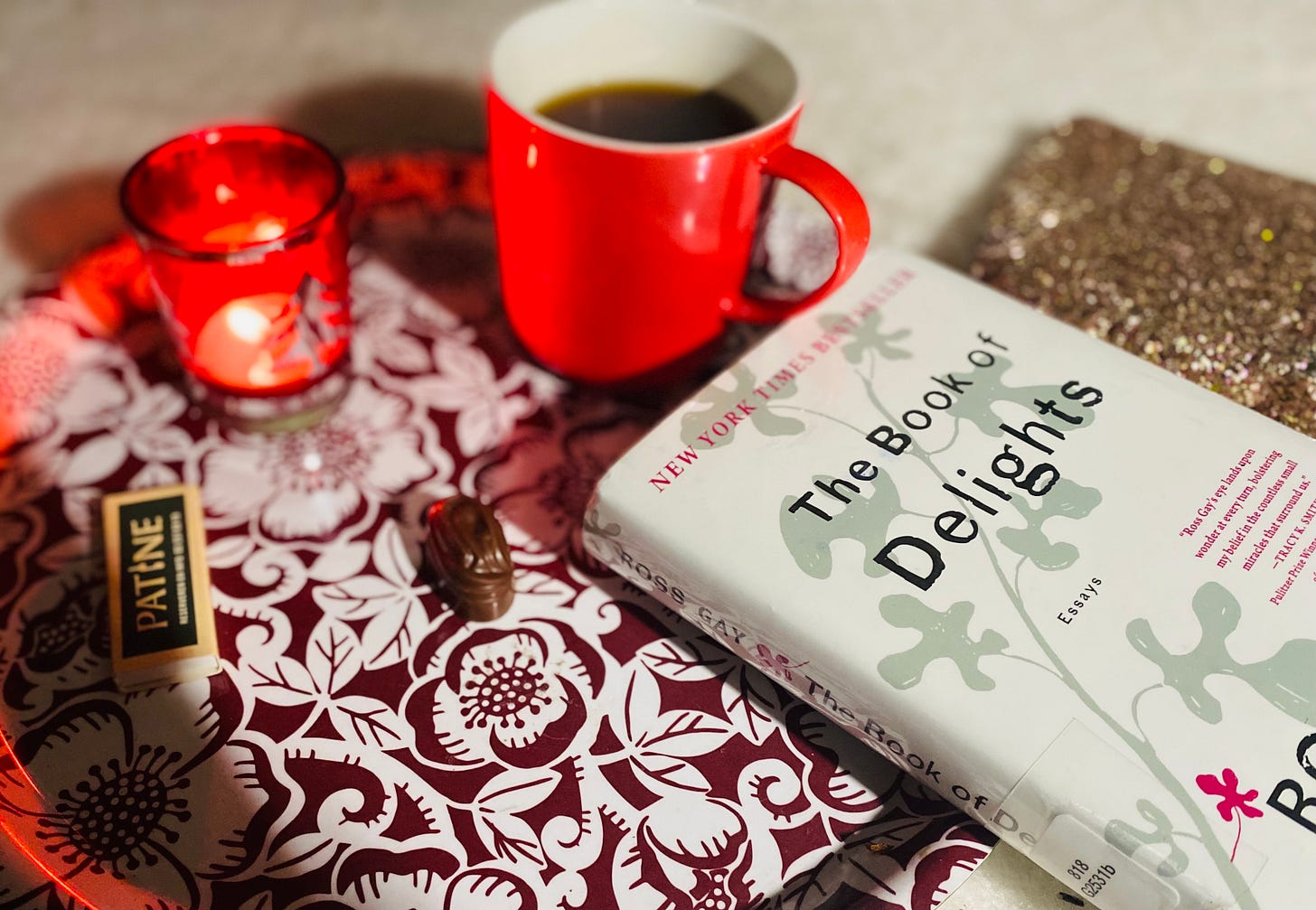
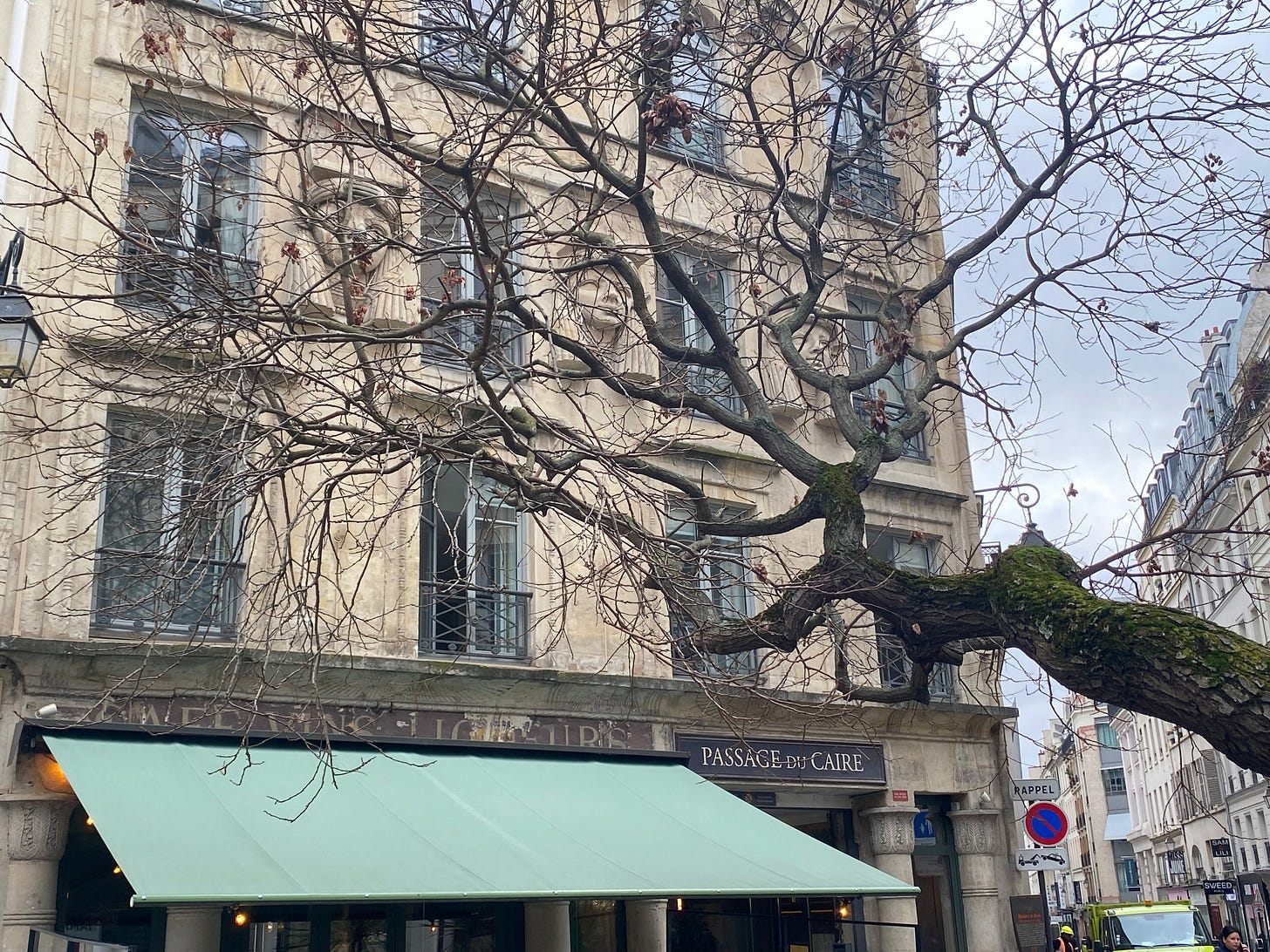
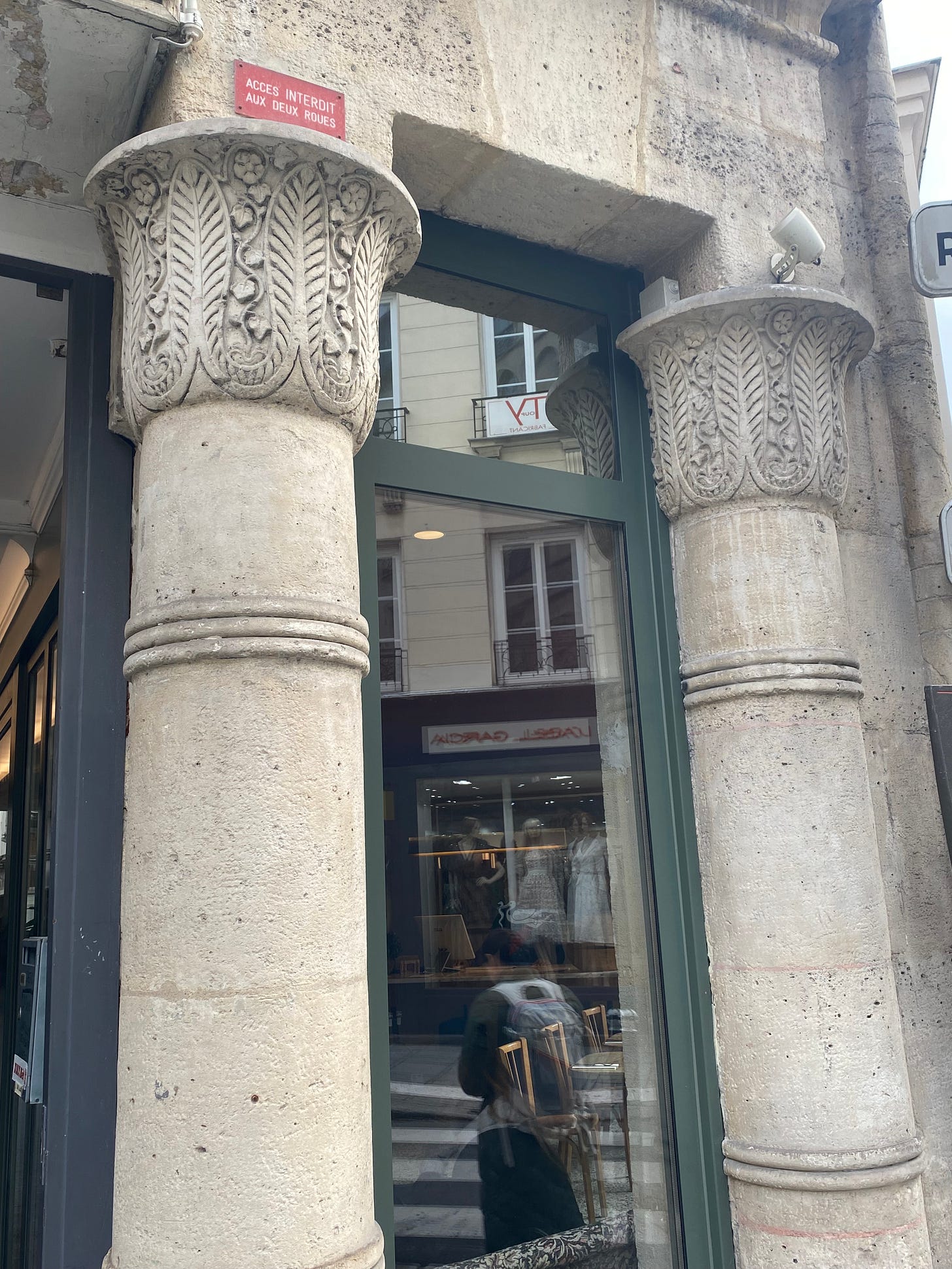

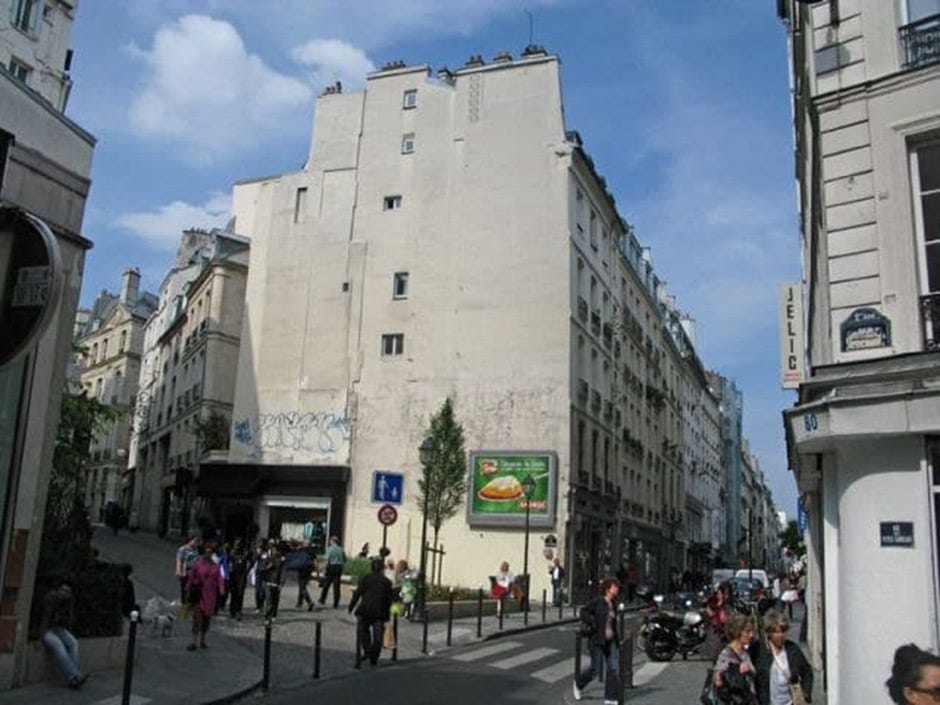
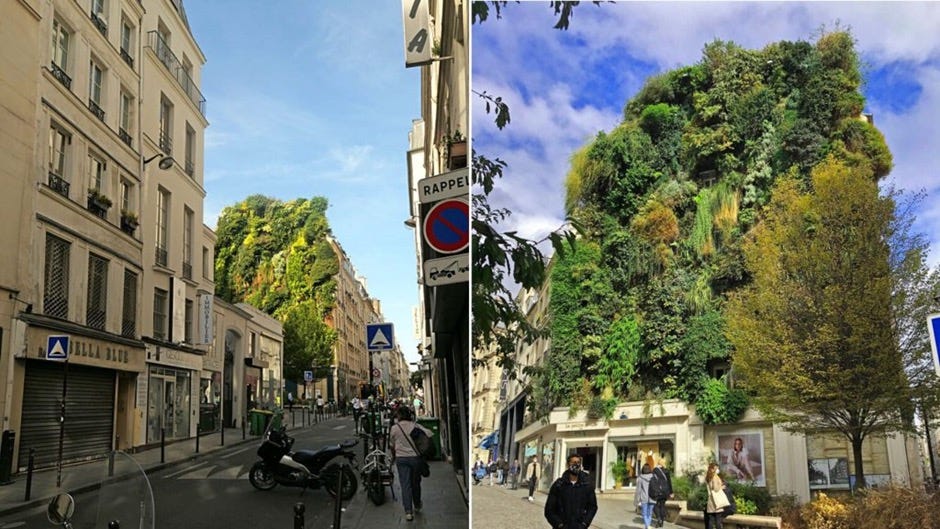
The wall is marvellous and such a heartening symbol of the resilience of nature. I didn't know of the book, so I am now off to have a look!
You bring this space so much joy and peace Dacha. Thank you for keeping writing. 🌻